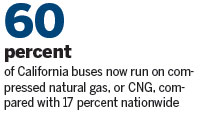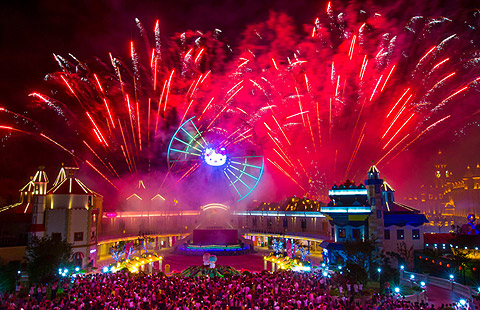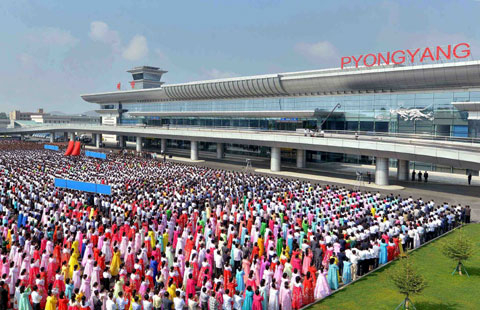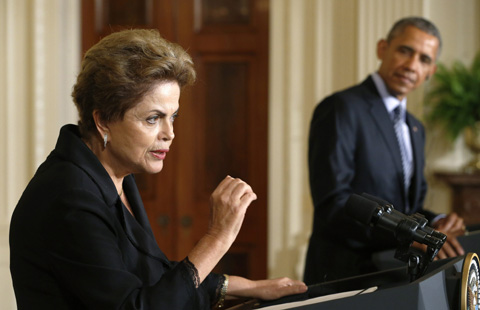California mulls move to 'zero-emission buses'
Updated: 2015-07-03 07:53
By Reuters in Los Angeles(China Daily)
|
||||||||
Fifteen years ago, California led the way to cleaner transit buses with strict tailpipe emissions standards, which effectively ushered out diesel as the primary fuel for buses in the state and replaced it with natural gas.
Now, California is poised once again to take the lead, this time by mandating a switch to so-called zero-emission buses by 2040.
The new push by the powerful California Air Resources Board has the potential to marginalize natural gas as a bus fuel in the same way its adoption once marginalized diesel.
In response, the California Natural Gas Vehicle Coalition has proposed expanding the definition of "zero-emission vehicles" to include not just electric buses, but also those powered by "renewable natural gas", which is produced from cow manure or decomposing organic matter in landfills.
Whereas regular natural gas offers a reduction in greenhouse gases of about 15 to 20 percent over diesel, renewable natural gas offers a reduction of about 90 percent over diesel, the coalition says.
"That's going to be a tremendous step forward over where we are today," coalition President Tim Carmichael said.
The stakes are high. About 60 percent of California buses now run on compressed natural gas, or CNG, compared with 17 percent nationwide. And with about one-seventh of the nation's 67,000 transit buses operating on California's roads, the state is a crucial market for both bus manufacturers and fuel suppliers.
Trade-offs
California's 12-member Air Resources Board will decide the issue next year after a review of available bus technologies. But so far, it has said it is disinclined to allow anything but true zero-emission transit vehicles, citing a state goal of reducing greenhouse gas emissions to 80 percent below 1990 levels by 2050.
"We are looking at zero emissions where feasible," said Tony Brasil, a CARB official.
One impediment to that approach could be whether the available electric and fuel-cell buses can meet the needs of the state's transit agencies.

As of March, there were 22 battery-powered electric buses and seven fuel-cell powered buses in California transit fleets, according to CARB.
Today, agencies looking to purchase electric buses can choose between vehicles that need to be removed from service for hours of charging every 155 miles or so-called "fast-charging" buses that must stop for five minutes of recharging after traveling about 30 miles. By contrast, buses powered by diesel or natural gas can travel about 300 miles before refueling.
Another potential issue is that power delivery systems at transit agencies would likely need to be upgraded to accommodate electric buses.
"If you have a yard with 200 buses, is there enough power in the neighborhood to run that at this point?" asked Steve Miller, chair of the California Transit Association's zero emissions bus task force. "We'd like to see that vetted out prior to a regulation going on the books."
Fuel cell buses have a much longer range than those powered by battery, but they also lack fueling infrastructure.
(China Daily 07/03/2015 page10)
- Injured ROK tourists in intensive care
- 36 dead, 26 missing after banca capsized in C. Philippines
- Thai navy plans to buy three Chinese subs
- Mass casualties in Indonesian military plane crash
- Japan's LDP lawmaker denounces Abe's security policies
- More than 100 feared dead in Indonesian military plane crash

 Western Europe swelters in long-lasting heat wave
Western Europe swelters in long-lasting heat wave
 Top 10 shareholders of AIIB
Top 10 shareholders of AIIB
 Massive Hello Kitty theme park opens to visitors
Massive Hello Kitty theme park opens to visitors
 New terminal of Pyongyang Intl Airport put into use
New terminal of Pyongyang Intl Airport put into use
 Ten paintings to remember Xu Beihong
Ten paintings to remember Xu Beihong
 Obama hails new chapter in US-Brazil relations
Obama hails new chapter in US-Brazil relations
 Boxers top Forbes highest paid celebrities list
Boxers top Forbes highest paid celebrities list
 Not so glamorous: Glastonbury ends with sea of rubbish
Not so glamorous: Glastonbury ends with sea of rubbish
Most Viewed
Editor's Picks

|

|

|

|

|

|
Today's Top News
Solar-powered plane breaks solo flight record across Pacific to Hawaii
California mulls move to 'zero-emission buses'
Veteran diplomat in Havana shortlisted for ambassador
Move to Houston pays off with new business
IPR law acted out
Economic growth driving force for China's future mobility: Think tank
'Operation duck' and the student savior from internment camp
White House lifts ban on cameras during public tours
US Weekly

|

|






